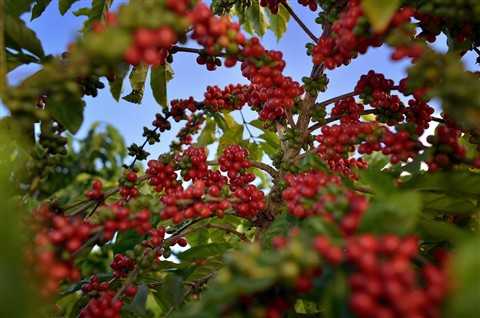SAO PAULO, Brazil – The harvesting of the 2022/23 crop of robusta coffee is beginning to step up in Brazil, pressing down its quotations, says Cepea in its latest report. According to the agents consulted by Cepea, in Espírito Santo, crop activities have begun in many farms. By the end of the first fortnight (May 13th), less than 5% of the total had been harvested – the peak of harvest is expected between late May and June.
The output of Robusta in ES State is forecast to be high this season, reflecting favorable weather conditions
On the other hand, in Rondônia, 10-20% of the total has been harvested, with activities forecast to step up in late May. However, it is important to consider that, this season, the output may be lower than that previously estimated, due to the drought at the beginning of crops development.
In the Brazilian spot market, the supply of the new crop available in the market increased in the first half of May, pressing down robusta quotations. Thus, the CEPEA/ESALQ Index for the robusta type 6, screen 13, Espírito Santo, returned to around BRL 750 per 60-kilo bag, which had not been observed since March. Although a few deals were closed in that period, lower prices kept some sellers away from the market.
On May 13th, the CEPEA/ESALQ Index for the robusta type 6, screen 13, Espírito Santo, closed at BRL 752.61 (USD 148.91)/bag, a steep 5% down from that on April 29th.
Arabica
Hand-picking began in some arabica crops in the first fortnight of May. Agents consulted by Cepea reported that activities were concentrated majorly in southern Minas Gerais and in Garça (SP). On the other hand, in the Cerrado Mineiro, the Mogiana Paulista and northwestern Paraná, hand-picking is expected to begin in the second fortnight of May.
In the Matas de Minas (Zona da Mata), the harvesting pace was faster, since, in that region, activities began in late April. Still, most crops are forecast to be harvested between June and July in all arabica-producing regions.
As for the volume to be harvested, Cepea collaborators are optimistic about the output in the Matas de Minas and in Garça, where crops were not severely damaged by the drought and frosts. On the other hand, in the remaining regions, production is expected to be lower, due to weather issues.
In the spot market, arabica prices dropped in the first fortnight of May, influenced by devaluations of future contracts. Abroad, pressure came from both risk aversion in financial markets – because of the Russia-Ukraine war and the lockdown in China – and the dollar appreciation against the Real. Arabica devaluations in Brazil kept sellers away from the market and liquidity low.
On May 13, the CEPEA/ESALQ Index for arabica coffee type 6, delivered to São Paulo city, closed at BRL 1,259.80 (USD 249.27)/60-kilo bag, 0.6% lower than that on April 30. The US dollar closed at BRL 5.054, 2.1% up in the same period.


















